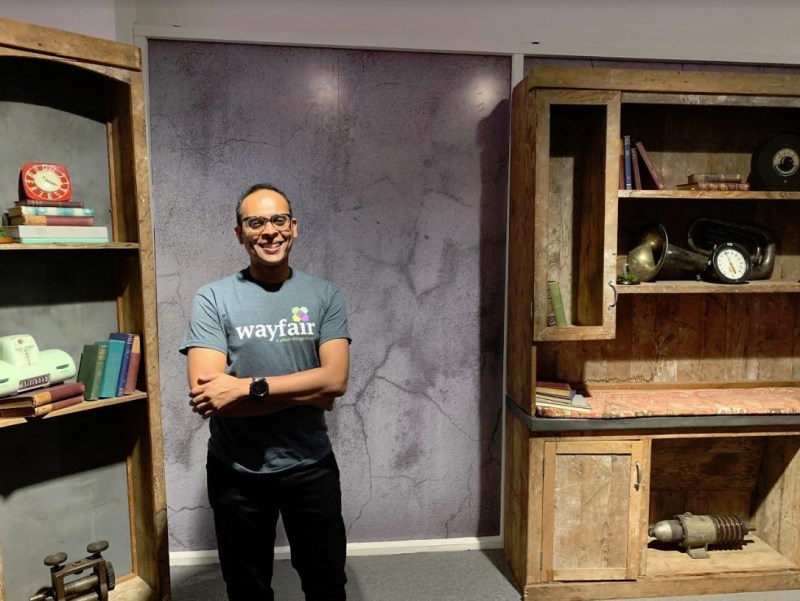Home goods online retailer Wayfair demonstrated how you can become an interior decorator using the Magic Leap augmented reality glasses.
The Boston company created an app called Wayfair Spaces on the Magic Leap One Creator Edition, and it showed it off this week at the L.E.A.P. conference in Los Angeles. I tried out the demo, looking at furniture through prescription lenses on the Magic Leap One headset.
The idea is to use AR to place virtual furniture in your real home to figure out if it will fit before you buy it or move all your furniture around. Visualizing the combination of the digital and physical world — or spatial computing — is what Magic Leap is all about.
Wayfair Spaces is one of those applications that crosses the border between professional and consumer spaces. Interior decorators might find the $2,295 glasses to be worth the price if they can show clients what they buy and how they can configure it. For rich consumers, the app is more like a nice distraction. Like most of Magic Leap’s demos, it tells you more about what the future could be like.
“When you think of the PC or the phone in the old days, you started using it as a tool, and this is the next tool,” said Shrenik Sadalgi, head of Next Gen Experiences at Wayfair, in an interview with VentureBeat. “This platform lends itself to problems in understanding your physical space. You can use it to make your space better.”
With Wayfair Spaces, it took just a little bit of practice before I could select an item in a home merchandise scene, set in a living room, and tap on objects (via the Magic Leap controller) to pick them up. Once I picked them up, I could look at the living room around me and place the object. I could put a virtual lamp on a table, and it would sit on the table the way a real lamp should. It didn’t cast shadows properly, but that’s something Magic Leap is working on. The occlusion works well, though, so you can’t see virtual objects if they are hidden behind other objects. I picked up the fake lamp and put it on a fake table, to see what that would look like if I had purchased them for the real world scene.

Above: Shrenik Sadalgi, head of Next Gen Experiences at Wayfair.
I dragged individual furniture items, such as an accent table, into a space between a bookshelf and another item. The table looked like it was floating a bit, taking away from the realism just a tad. I dragged a framed photograph from the menu and dropped it on the wall. Immediately, it found the space on the wall and attached itself in a way that looked pretty realistic. You can tap on any virtual object you’ve placed and call up a description that floats in space, telling you things like the style and the price.
With this kind of tool, I figure ordinary consumers could become much more adept at decorating their own spaces, raising the bar for professionals. On the other hand, you can use this kind of AR tool in smartphone augmented reality apps today with varying degrees of precision, without the large price tag for the Magic Leap glasses. Wayfair has a phone-based AR system as well.
Wayfair Spaces is available in the Magic Leap app store, ML World, and you can view the Wayfair web experience in the Helio browser. The company had virtual spaces set up for a contemporary living room, industrial office, and other environments. To buy items for real, you have to wait until Magic Leap integrates other sites into its own. The device has to scan a room before you can place objects, and you can’t have it scan too often or it will slow down the frame rate of the glasses.
Overall, Wayfair has a real-world selection of more than 10 million items across home furnishings, décor, home improvement, housewares, and more.
Wayfair generated $5.7 billion in net revenue for the past year, and it employs 9,700 people. It’s the kind of company that Magic Leap needs to get on board with its technology. Of course, at some point, Wayfair is going to want a lot of traffic out of Magic Leap. Wayfair has been working on the tech for Wayfair Spaces for around 2.5 years.
“You think of this tool as your palette and your space as your canvas, you can start designing,” Sadalgi said. “It has to be intuitive and powerful.”
